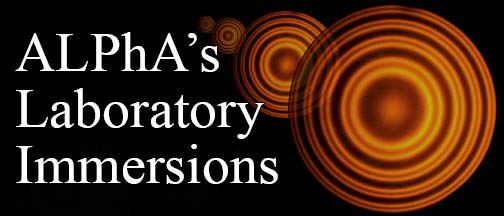- Home
- What We Do
- Laboratory Immersions
- Immersions 2018
- Imm2018Chicago_ESRBrownianPET
Brownian Motion Using Particle Tracking; Positron Emission Tomography; and Electron Spin Resonance
University of Chicago, July 13-15, 2018
In this Immersion, three different experiments will be taught at the University of Chicago. Immersion participants will spend one day on each experiment, learning about the equipment and techniques employed as well as taking and analyzing data as a typical student would.
Please follow this link to learn more about the Brownian motion experiment.
Positron Emission Tomography (PET) is a medical imaging technique which is commonly used to map out metabolic activity in the body. Typically a positron emitting radionuclide (such as 18F) attached to a glucose molecule is injected into the body where it is taken up by tissues in proportion to their metabolic activity. Positrons produced by the decay of the radionuclide usually travel less than 1mm in human tissue before they annihilate with an electron. Most of the positron/electron annihilations result in the emission of a back-to-back pair of 511keV photons. These photon pairs leave the body and can be detected. Areas of the body where there is high metabolic activity, such as cancer cells or active regions in the brain, will be more intense emitters of these 511keV (gamma-ray) photon pairs. In a PET scanner arrays of scintillator+PMT detectors are used to measure the intensity of this radiation along well defined planes (referred to as slices) passing through the patients body. These slices are then used to reconstruct a three dimensional image.
Please follow this link to learn more about the PET experiment.
In Electron Spin Resonance, we will study how a classical “particle” having magnetic dipole moment and angular momentum responds to an external magnetic field. We will relate these findings to quantum mechanical properties of electrons. We will study energy and angular momentum transfer from rotating fields to the particle. In the classical system measurements will be made of the magnetic dipole moment and angular momentum of a ball riding on an air bearing. The relation among magnetic moment, angular momentum, magnetic field and precession frequency will be determined. This relation will be used to understand similar relations for electron spin resonance.
Please follow this link to learn more about the ESR experiment.
Please note that the Jonathan F. Reichert Foundation has established a grant program to help purchase apparatus used in Laboratory Immersions. Limitations and exclusions apply, but generally speaking the foundation may support up to 40% of the cost of the required equipment.






